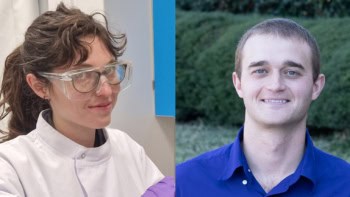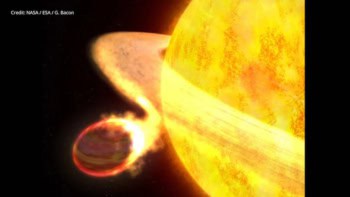
The James Webb Space Telescope (JWST) has completed its final round of cryogenic testing at NASA’s Johnson Space Center in Houston, Texas. On 10 July the spacecraft’s optical telescope and integrated science instrument module were sealed in Chamber A, which is a huge cylindrical vacuum chamber that is 27 m tall and 17 m in diameter. There, it was cooled to temperatures as low as 11 K, using cold helium gas and then put through a three-month testing programme to ensure that the JWST will function in a cold and airless environment similar to space.
One of the tests involved ensuring that the telescopes 18 primary, gold-coated mirror segments continue to act as single mirror when cooled. Engineers also ensured that the telescope optics and instrument module can function together under extreme conditions.
Weathering the storm
Before the tests could begin, it took a week to remove most of the air from the chamber and a month to cool the instruments to the required temperature for testing. The programme of tests coincided with Hurricane Harvey, which dropped more than one metre of rain on parts of Houston. Despite the difficult conditions during the storm, the team managed to safeguard that the testing was not interrupted.
The instrument module and optics will now be shipped to Northrop Grumman Aerospace Systems in Los Angeles, where it will be integrated into the JWST spacecraft. Once this is complete, the spacecraft will be subject to a final round of “observatory-level testing” before being launched in the spring of 2019.
The JWST programme is led by NASA and involves the European Space Agency and the Canadian Space Agency.



